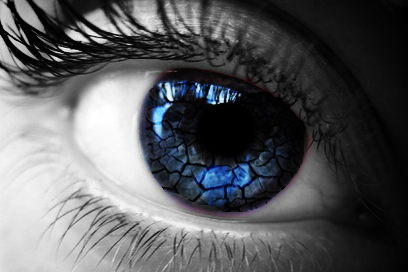So seeing is believing right? Think again…
The whole concept behind visual illusions is that our minds make assumptions about the sensory information we perceive. A visual illusion occurs when our minds perceive an image that is different from the objective reality. This may happen for a variety of reasons such as over stimulation of the brain and eyes or the brain and eyes making unconscious inferences. The bottom line is that what we see isn’t always necessarily the truth…

This visual illusion is called the Hermann Grid. Notice how the black dots are coming and going and each individual dot will become white when you focus on it.
Let’s take a look at the Hermann Grid, a classic example of visual illusions that deals with contrast and colors. Why are the black dots coming and going? Why does any particular dot become white when you focus on it?
Visual sensory information is accepted by light receptive cones and rods. The receptors pass the information down through intermediary cells, such as retinal ganglion cells. However, here’s the twist: there are 125 million receptors in the retina and only one million retinal ganglion cells. Therefore, before any information reaches the brain, all visual input is being compressed at a ratio of 125 to 1. No wonder the “image” your light receptors receive is not the same “image” your brain receives.
Lateral Inhibition
The retinal ganglion gathers stimuli from a small area of light receptors. Many ganglion cells then pass along the average of this stimuli. However, lateral inhibition cells are a bit more complex. For lateral inhibition cells, stimuli from the center of the receptive field is “positive” and stimuli from the edges of the receptive field is “negative.” This becomes useful when the eyes are presented with edges because edges are where high contrast meet low contrast. In the case of the Hermann Grid, the white dot in the middle is a “positive” stimulus but the surrounding white creates an even bigger “negative” stimulus. Therefore, the middle white dot is perceived as white when we focus on it and the surrounding white lines are perceived as grey. .
We can conclude from this that what we see may not be the truth. Would it be too much of a stretch to take this lesson learned from visual illusions and apply it to our daily lives? For example, if we catch a glimpse of our new crush talking to a girl or a guy we often jump to conclusions that he or she likes that person more than us. But this may not be true, in fact often times that it is not the case. As visual illusions teach us, seeing should not be believing.
Here is a list of optic illusions if you are interested in looking at a few more! Clicking on the name of the illusion will explain how the illusion works. Enjoy!

